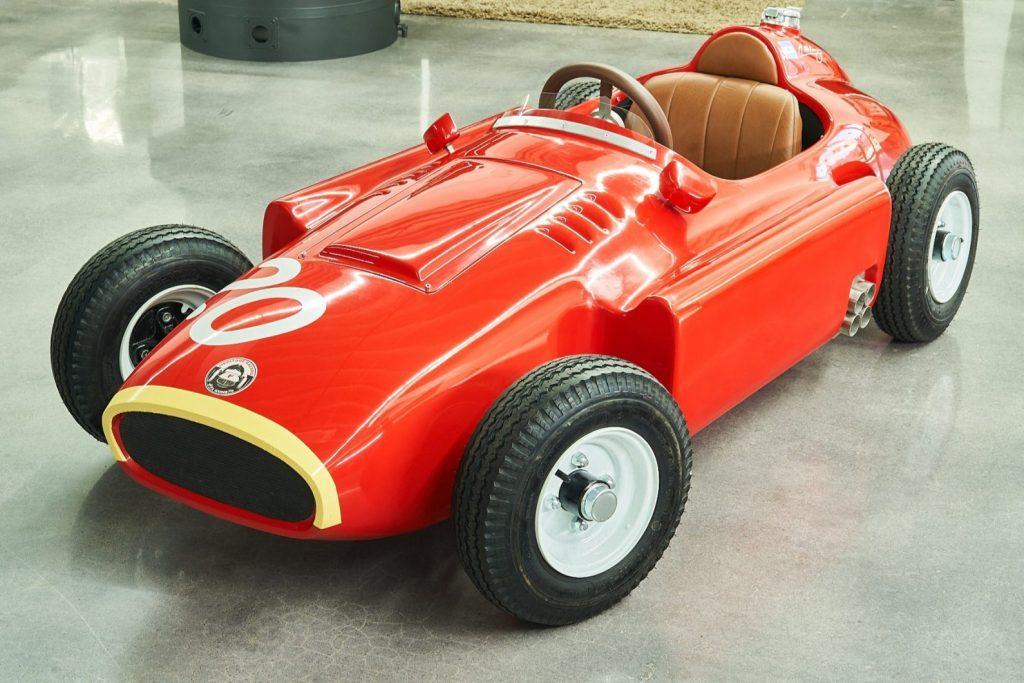
Current Price: USD $4,100 – Source
Auction Ends:
–
This go-kart is marketed by Heritage Racers of Miami, Florida, as the D50 in the style of the 1956 Ferrari-Lancia D50 Formula 1 car driven by Juan Manuel Fangio. It features fiberglass bodywork finished in red fitted over an aluminum frame, and it is powered by an electric motor with forward and reverse. Additional features include faux side-mounted fuel tanks and quad exhaust outlets, a front grille, an aluminum fuel filler cap, adjustable foot pedals, a three-spoke steering wheel, a brown seat, a windscreen, #20 race numbers, 8″ wheels, and side mirrors. This electric go-kart was purchased by the seller in 2025 and is now offered at no reserve in Miami Beach, Florida, on a bill of sale.
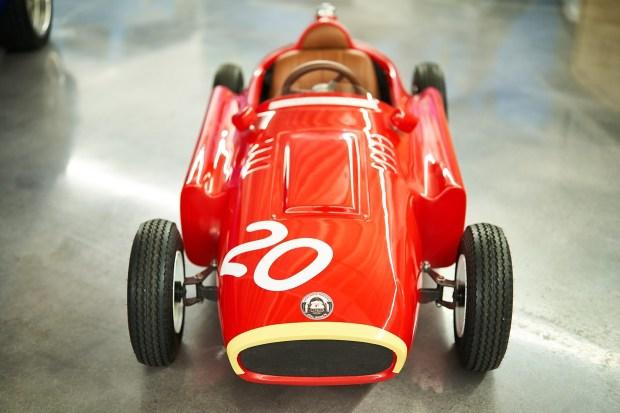
In 1953, Gianni Lancia tasked Vittorio Jano to head a team of engineers to build a single-seat race car to compete in Formula 1, and the result was the D50. Styling attributes included fuel tanks mounted on either side of the cockpit. The Ferrari-engineered 1956 version featured quad side-exit exhausts and was driven that year by Juan Manuel Fangio to claim his fourth Formula 1 World Drivers’ Championship.
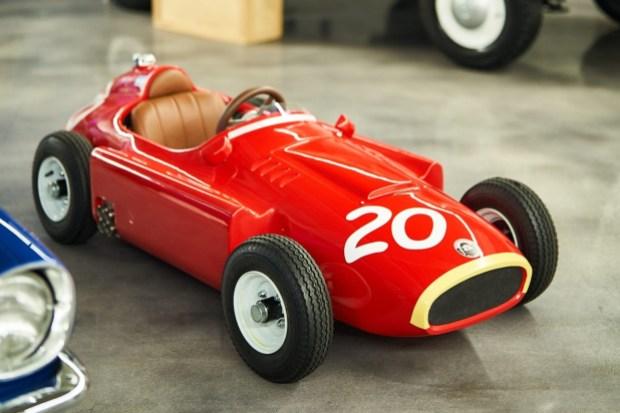
The fiberglass bodywork is finished in red and is accented by a yellow stripe over the nose. Additional features include body-color side mirrors and faux side fuel tanks, a removable hood panel with a faux hood scoop and vents, white #20 race numbers, a plastic windscreen, and a mesh grille. The car measures approximately 89″ long, 35″ wide, and 27″ to the top of the windscreen, and it weighs 210 pounds.
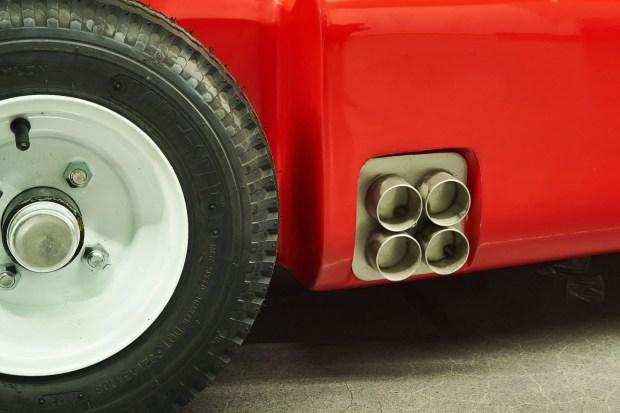
The 8″ white-finished steel wheels wear 4.80-4.00 Load Star tires. Braking is provided by a drilled disc brake on the rear axle. Faux quad exhaust outlets feature on each side.
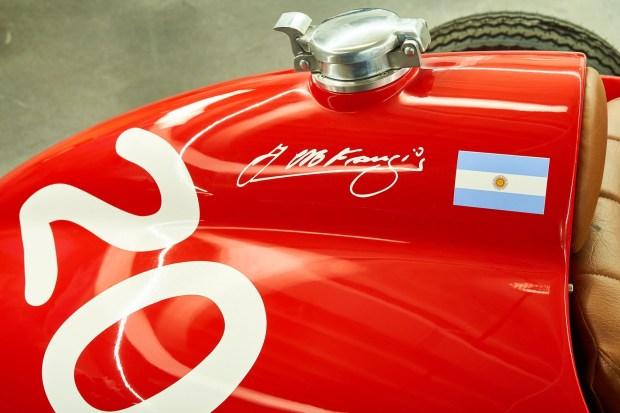
The rear bodywork features Argentinian flags and white Juan Manuel Fangio-style signatures as well as an aluminum fuel filler cap that reveals access to the charging plug point.
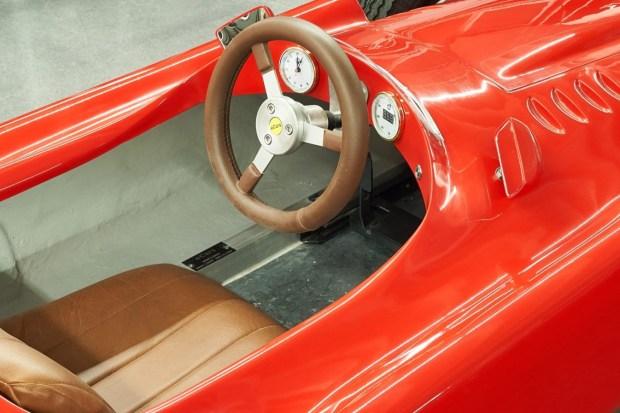
The cockpit features a single seat with a matching headrest and the three-spoke steering wheel, which are upholstered in brown faux leather. The body-color dashboard has an analog clock on the left side and a faux tachometer on the right, the latter of which is inset with a digital voltage display. A power button is positioned on the right side, and a rocker switch below the dash activates forward or reverse.
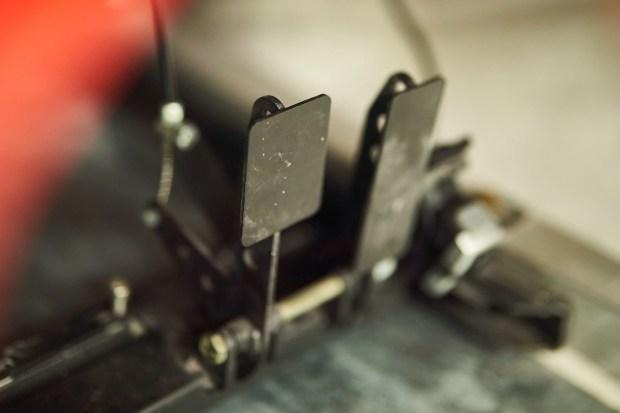
The 24-volt, 500-watt electric motor is linked to a drive chain and is mounted to the rear section of the aluminum frame. The left pedal shown is a footrest, and the pedals are adjustable for leg length.

